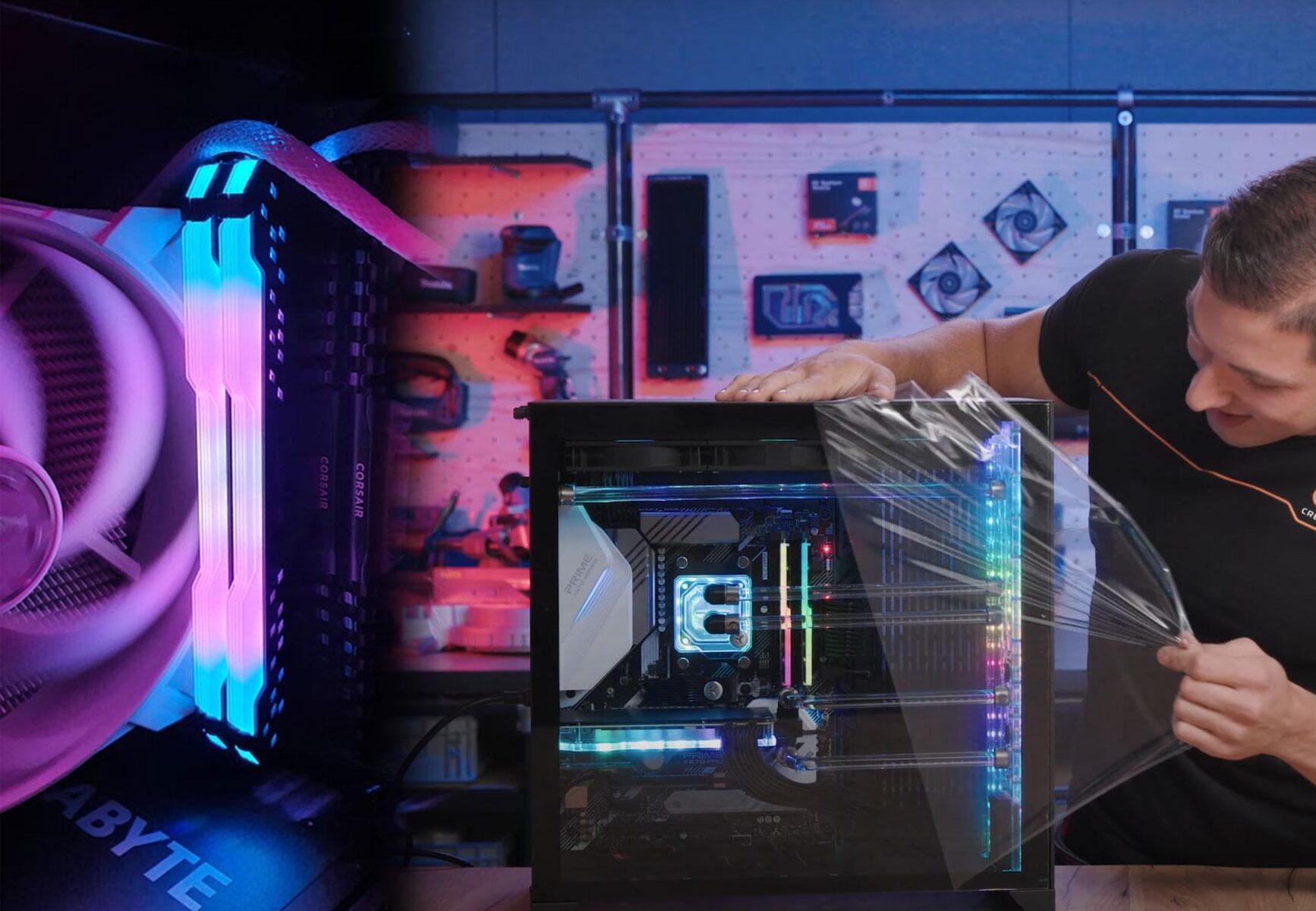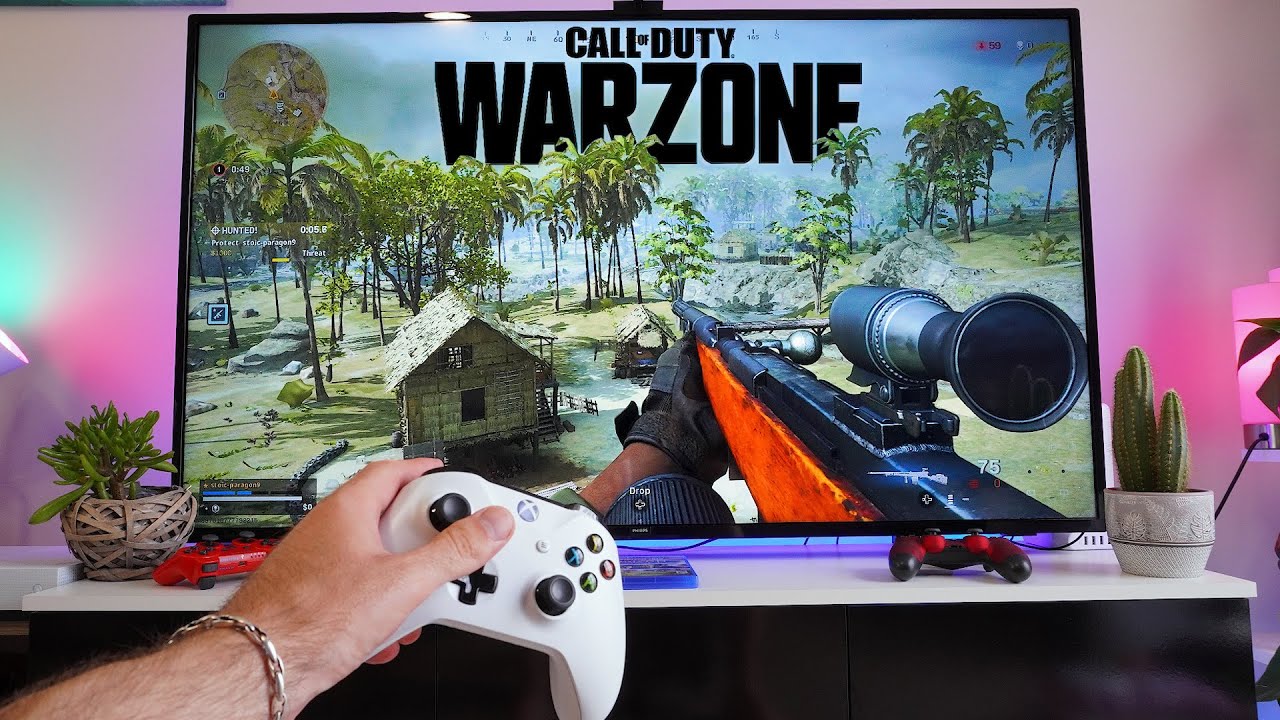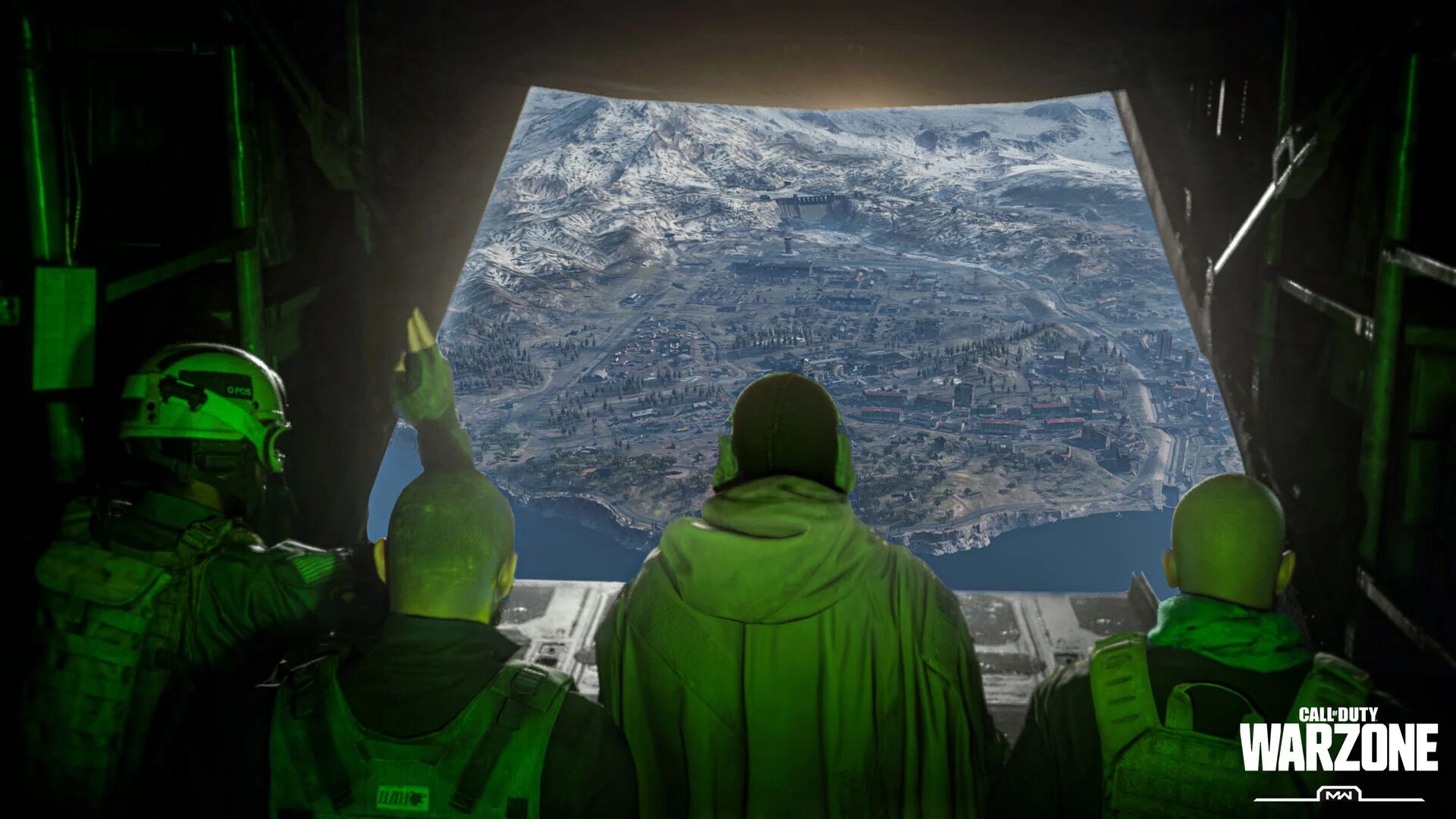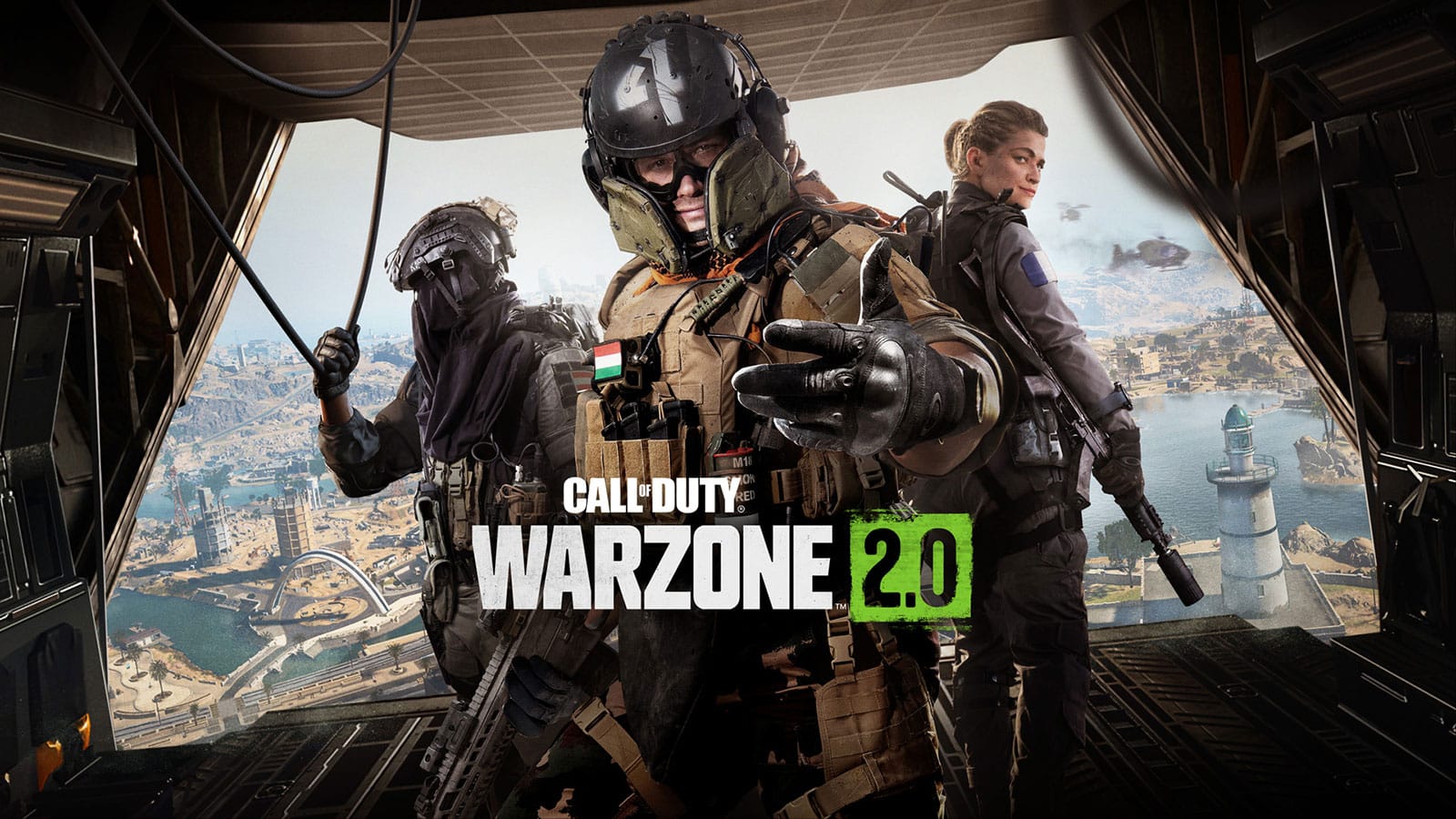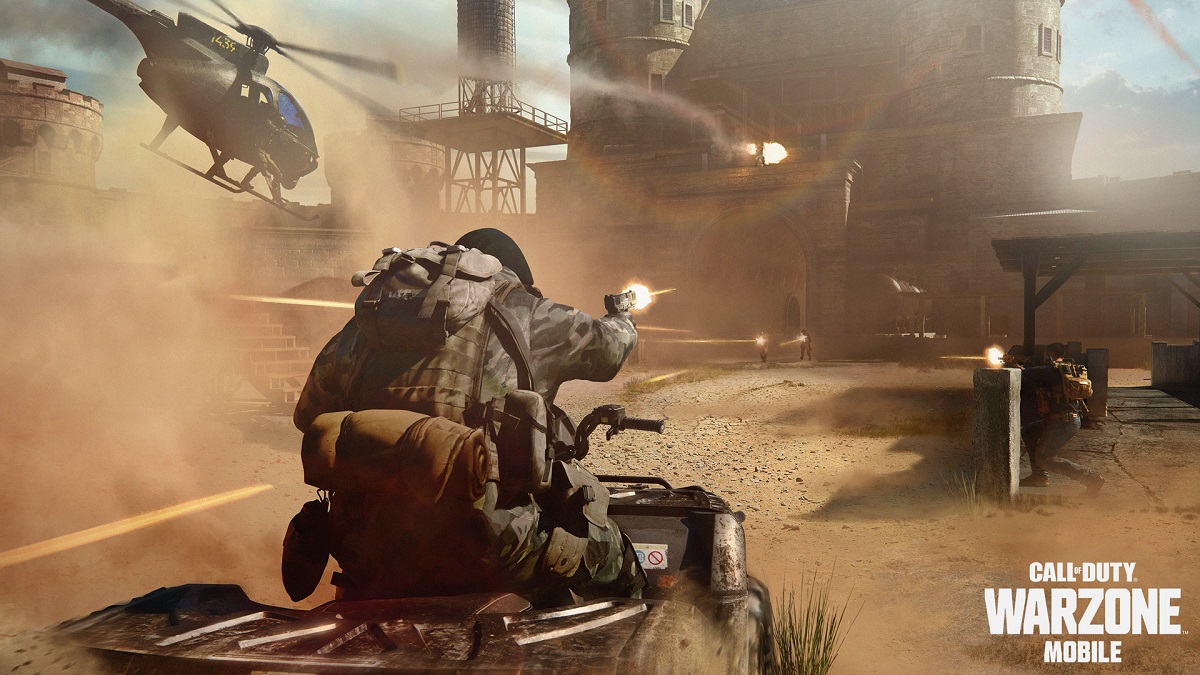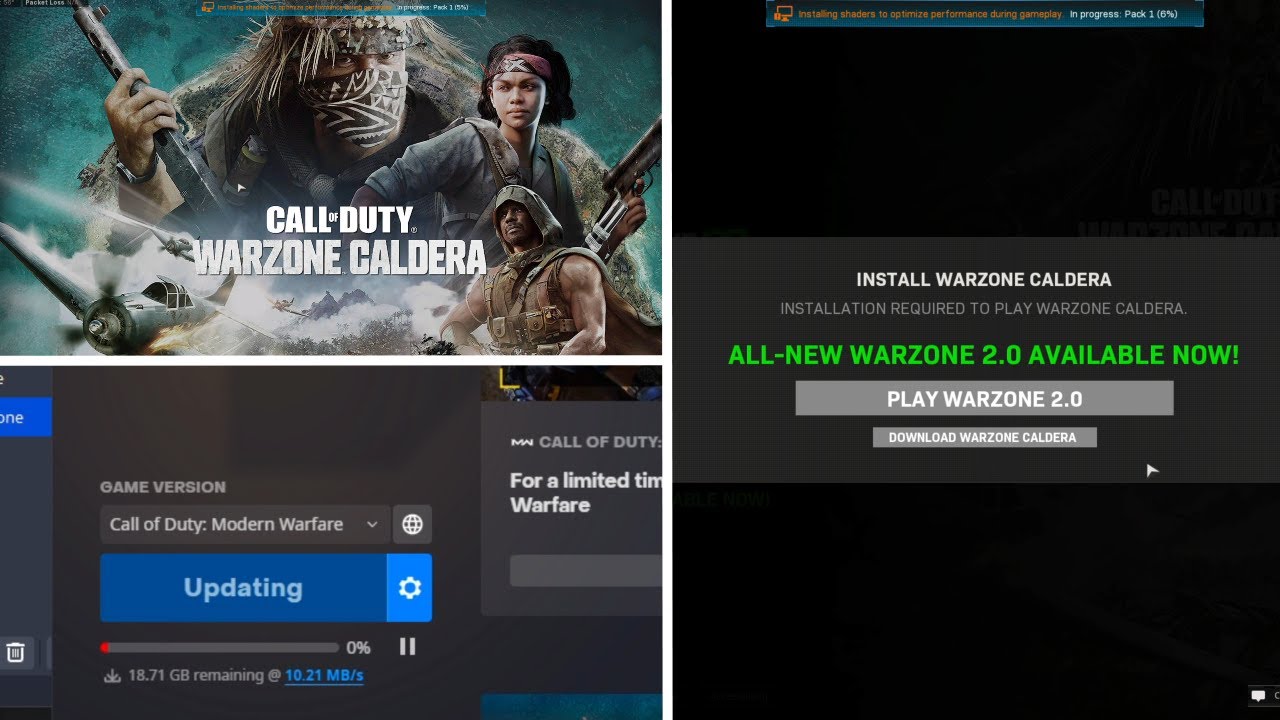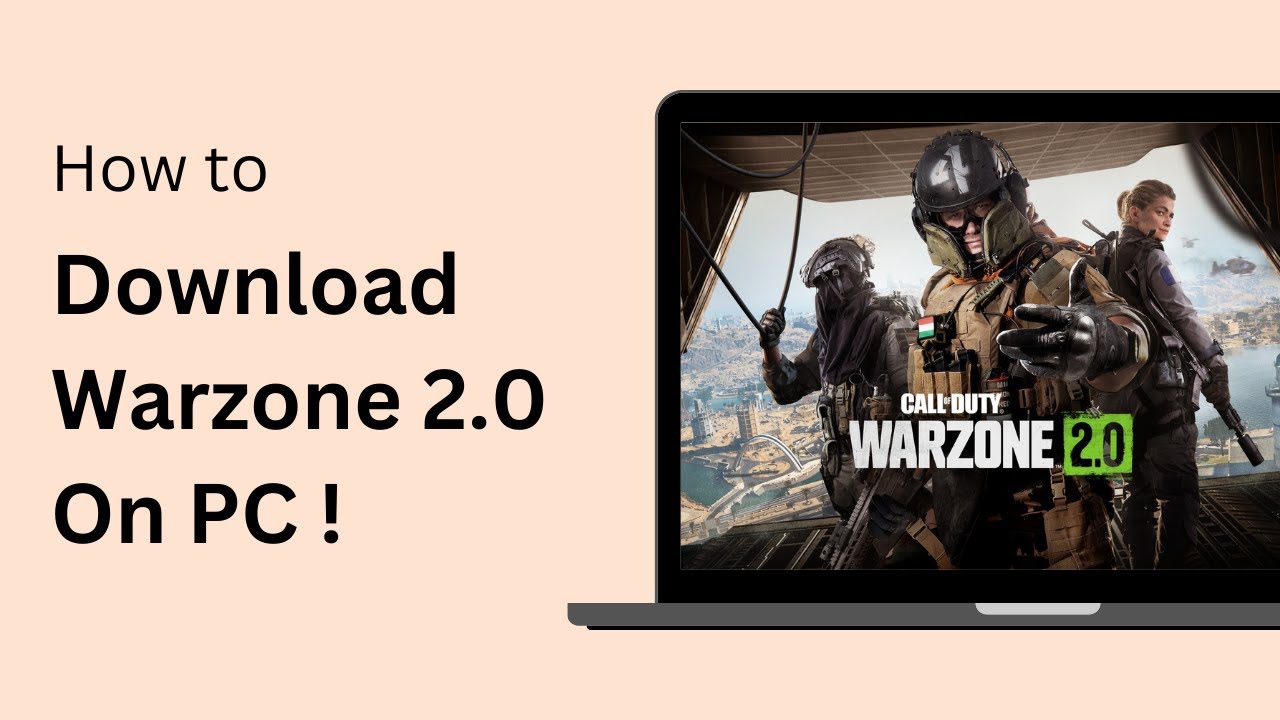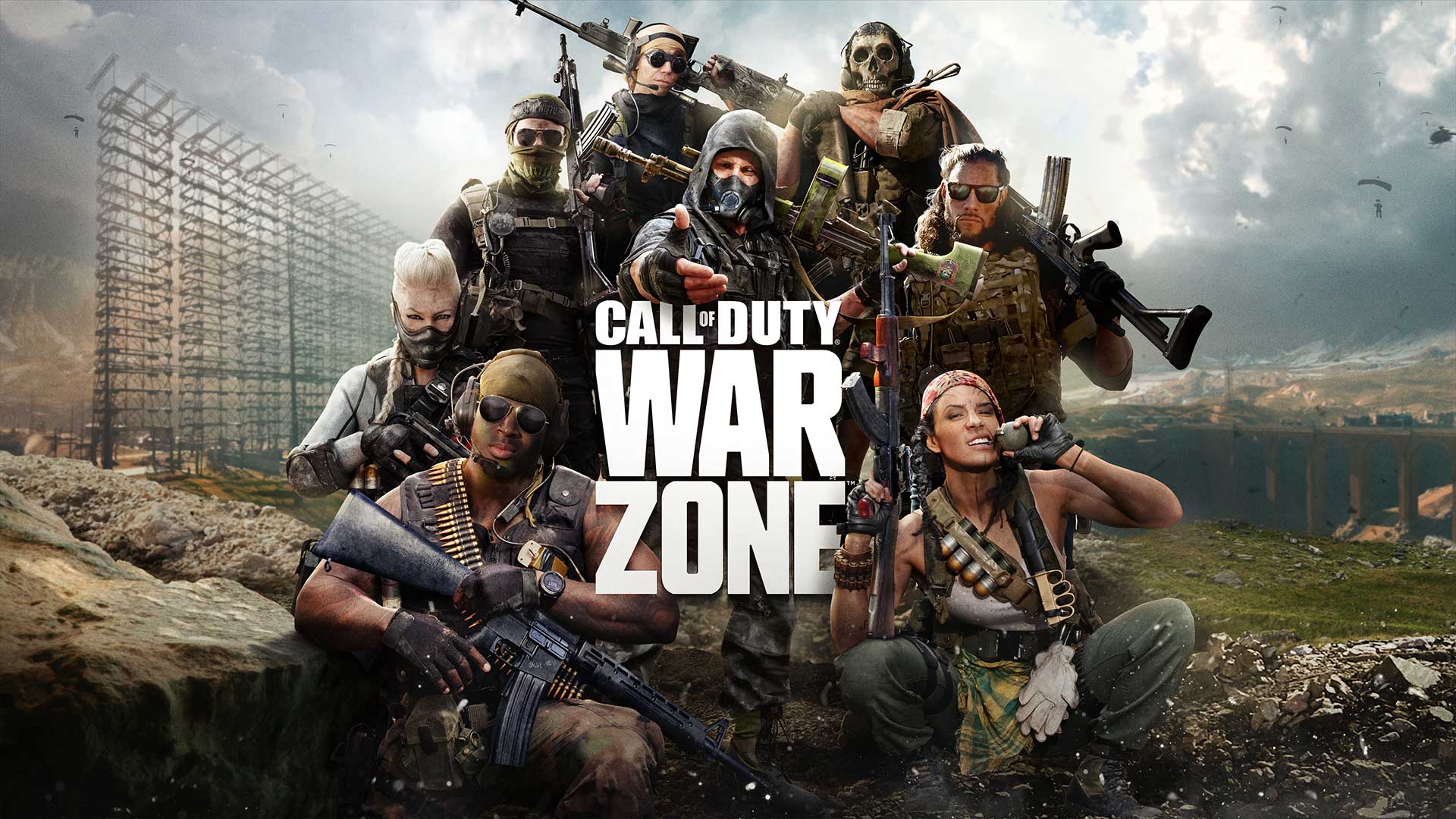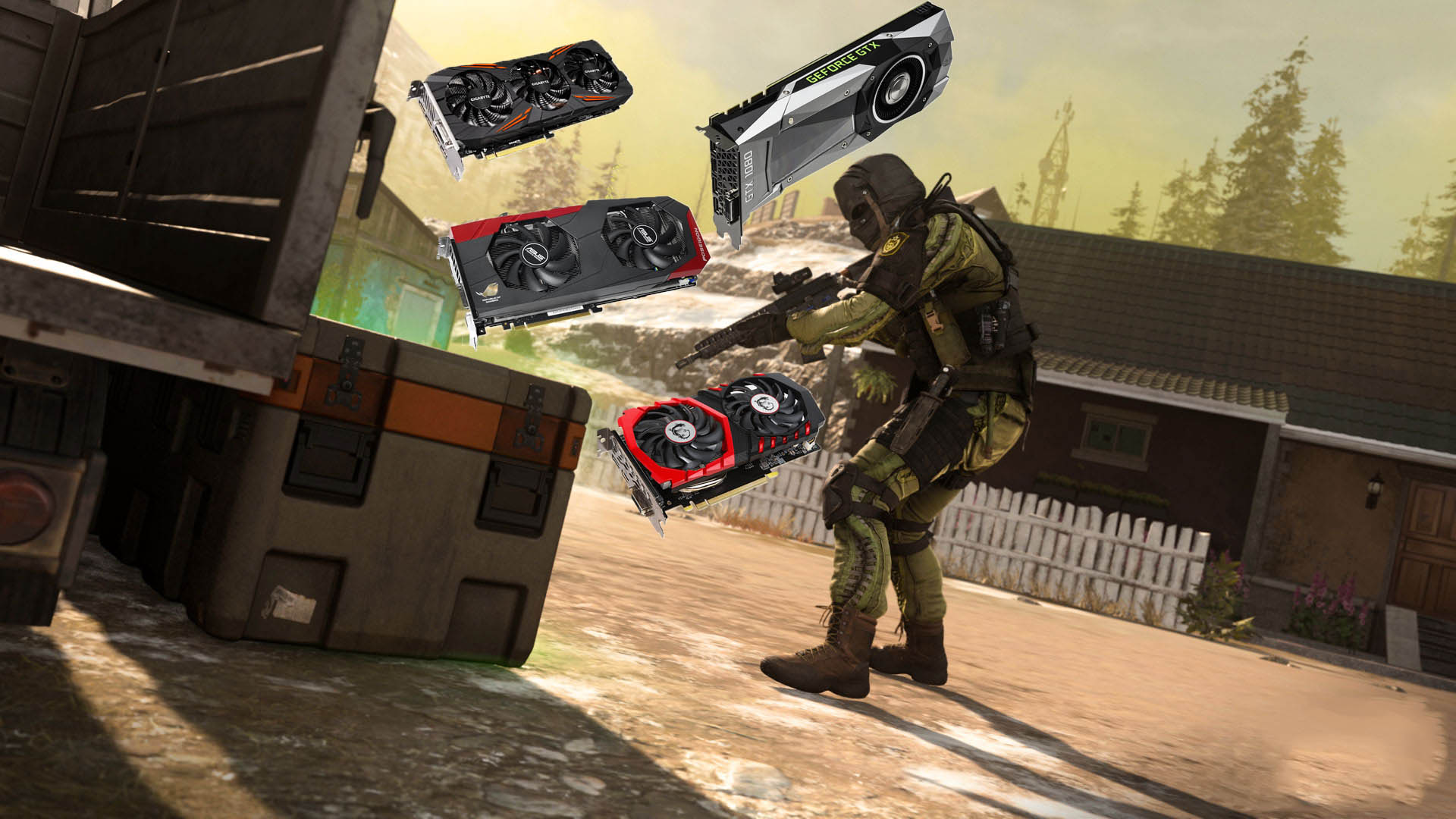Introduction
If you’re an avid gamer, you have likely heard of the highly popular battle royale game, Warzone. Developed by Infinity Ward and Raven Software, Warzone has taken the gaming community by storm since its release in 2020. With its intense multiplayer action and stunning graphics, Warzone offers an immersive gaming experience that keeps players hooked for hours on end.
But have you ever wondered how your computer’s hardware affects your Warzone gameplay? One critical component that plays a significant role in your gaming performance is RAM (Random Access Memory). RAM is essential for storing and accessing data quickly, allowing your computer to operate efficiently.
In this article, we will delve into the world of RAM and explore just how much of it you need to play Warzone smoothly. We will examine the minimum and recommended system requirements for Warzone, analyze the impact of RAM on the game’s performance, and provide insights on deciding the appropriate amount of RAM for optimal gameplay.
Whether you’re a casual gamer or a competitive player, having a solid understanding of RAM and its role in Warzone can help you make informed decisions about upgrading your hardware to enhance your gaming experience.
Understanding RAM and its role in gaming performance
Before we dive into the specifics of how much RAM you need for Warzone, let’s first understand what RAM is and its significance in gaming performance. RAM, or Random Access Memory, is a type of computer memory that is responsible for temporarily storing data that your computer needs to access quickly.
When you launch a game like Warzone, various game files and data are loaded into your computer’s RAM. This allows the CPU (Central Processing Unit) to access and retrieve the necessary information in real-time, ensuring smooth gameplay and reduced lag.
The amount of RAM you have in your system directly impacts your gaming performance. Insufficient RAM can result in performance issues, such as slow loading times, frame rate drops, and overall stuttering during gameplay. On the other hand, having an adequate amount of RAM allows the game to run smoothly by providing the necessary resources for the game’s data to be easily and quickly accessed.
RAM also plays a crucial role in multitasking while gaming. In addition to Warzone, you may have other background applications running simultaneously, such as voice chat software, streaming services, or web browsers. If you have limited RAM, these additional programs can compete for resources, leading to decreased gaming performance. Having enough RAM allows your system to handle both the game and other applications smoothly without significant performance degradation.
Furthermore, RAM is essential for loading large game maps, textures, and assets. Warzone, being a graphically intensive game, requires a significant amount of memory to store and access these resources quickly. With ample RAM, the game can load and render high-resolution textures seamlessly, enhancing the graphical quality and overall visual experience.
Overall, RAM acts as a temporary workspace for your gaming system, facilitating the smooth operation of game-related data and enabling efficient multitasking. It is a critical hardware component that directly impacts your gaming performance and can greatly enhance your Warzone gameplay experience.
Minimum system requirements for Warzone
Before you can enjoy the intense battles and heart-pounding action of Warzone, it’s important to ensure that your computer meets the minimum system requirements set by the developers. These requirements are the bare minimum needed to run the game and provide a playable experience. While you may be able to launch the game with these specifications, it’s important to note that you may experience performance issues or limited graphical settings.
Here are the minimum system requirements for Warzone:
- Operating System: Windows 10 64-bit
- Processor: Intel Core i3-4340 or AMD FX-6300
- RAM: 8 GB
- Graphics Card: NVIDIA GeForce GTX 670 / GeForce GTX 1650 or AMD Radeon HD 7950
- DirectX: Version 12
- Storage: 175 GB of free space
These minimum requirements ensure that your system is capable of running Warzone, but it’s important to remember that you may need to adjust the graphical settings to achieve optimal performance. Additionally, having the minimum amount of RAM may result in longer loading times and occasional frame rate drops, especially in crowded or graphically demanding areas of the game.
If your current system meets or exceeds the minimum requirements, you can launch Warzone and start playing. However, if your computer falls short, you may need to consider upgrading your hardware to meet the minimum specifications for a smoother gaming experience.
Recommended system requirements for Warzone
If you want to fully immerse yourself in the breathtaking world of Warzone and experience the game at its finest, you should aim to meet or exceed the recommended system requirements. These specifications provide an optimal gaming experience with smoother performance, higher graphical settings, and reduced loading times.
Here are the recommended system requirements for Warzone:
- Operating System: Windows 10 64-bit
- Processor: Intel Core i5-2500K or AMD Ryzen R5 1600X
- RAM: 12 GB
- Graphics Card: NVIDIA GeForce GTX 970 / GeForce GTX 1660 or AMD Radeon R9 390 / AMD RX 580
- DirectX: Version 12
- Storage: 175 GB of free space
Meeting the recommended requirements ensures that your system can handle Warzone with ease, providing a smoother gameplay experience even in intense and graphically demanding situations.
With the recommended amount of RAM, you’ll have sufficient memory to load assets and textures quickly, resulting in improved visual quality and reduced texture pop-in. Additionally, the increased processing power provided by the recommended CPU and graphics card allows for higher frame rates, smoother animations, and more detailed graphics.
Meeting the recommended system requirements also ensures that you can enjoy the game’s features and modes to their fullest. Whether you’re participating in the intense Battle Royale mode or engaging in multiplayer battles, having a system that meets these requirements will provide the optimal gaming experience.
While meeting the recommended requirements is not mandatory, doing so will significantly enhance your Warzone gameplay. It’s a worthwhile investment if you want to fully immerse yourself in the game’s stunning visuals and engage in smooth and seamless combat.
Analyzing the impact of RAM on Warzone performance
Now that we understand the importance of RAM in gaming and the system requirements for Warzone, let’s analyze the impact of RAM on the game’s performance. RAM plays a crucial role in ensuring smooth gameplay and overall system responsiveness.
Warzone is a demanding game that requires a significant amount of memory to store and access game data efficiently. When you have ample RAM, it allows for faster loading times of game assets, textures, and large maps. This means you’ll experience reduced texture pop-in and seamless transitions between different areas of the game world.
In addition to faster loading times, sufficient RAM enables the game to run smoothly by providing the necessary resources for real-time data retrieval. Warzone relies on the CPU to process various calculations and commands, and RAM acts as a temporary storage location for this data. When there is enough RAM, the CPU can quickly retrieve the required information, resulting in a more responsive and fluid gaming experience.
Insufficient RAM, on the other hand, can lead to performance issues and hinder overall gameplay. When your system runs out of available RAM, it relies on the slower alternative, virtual memory or page file. This happens when your system uses a portion of your hard drive as temporary storage instead of the faster RAM. This swap between RAM and virtual memory can cause significant slowdowns and noticeable lag during gameplay.
Furthermore, RAM allocation is crucial when it comes to multitasking while playing Warzone. As mentioned earlier, gaming often involves running additional applications like voice chat software, streaming services, or web browsers. With limited RAM, your system may struggle to handle the game and these background applications simultaneously, resulting in decreased performance, longer loading times, and potential stuttering.
It’s important to note that while RAM is an essential factor in Warzone performance, it is not the sole determinant. Other hardware components like the CPU and graphics card also play significant roles. However, having sufficient RAM ensures that your system can keep up with the game’s requirements and deliver a smooth and enjoyable gaming experience.
Now that we have explored the impact of RAM on Warzone performance, the next question is: how much RAM do you need to run the game smoothly? Let’s find out in the next section.
How much RAM do you need to run Warzone smoothly?
When it comes to determining the optimal amount of RAM for running Warzone smoothly, there isn’t a one-size-fits-all answer. The ideal amount of RAM will depend on several factors, including your system’s overall specifications, intended graphical settings, and the extent of multitasking you plan to perform while gaming.
While the minimum system requirement for Warzone is 8 GB of RAM, this may not be sufficient for achieving a consistently smooth gameplay experience, especially if you want to run the game on higher graphical settings or engage in extensive multitasking. As mentioned earlier, running multiple applications while playing Warzone can put additional strain on your system’s available memory. To ensure smooth performance, it is generally recommended to have at least 12 GB of RAM.
Having 12 GB or more RAM allows the game to have sufficient memory to store and access the necessary data quickly without relying heavily on virtual memory or experiencing significant slowdowns. This ensures smoother loading times, reduced texture pop-in, and overall improved responsiveness during gameplay.
However, if you’re a competitive gamer or someone who wants to thoroughly maximize their Warzone experience, you might consider opting for even higher amounts of RAM. 16 GB or 32 GB of RAM can provide an extra buffer, allowing for seamless multitasking, better performance during resource-intensive moments in the game, and future-proofing your system for upcoming games with higher requirements.
Ultimately, the amount of RAM you need boils down to your specific usage habits, budget, and intended gaming experience. It’s also important to consider the other hardware components of your system, such as the CPU and graphics card, to ensure a balanced and optimized setup.
Keep in mind that upgrading your RAM alone might not solve all performance issues if other hardware components are outdated or underpowered. It’s essential to assess your system as a whole and identify areas that may require upgrading to achieve the smooth gameplay experience you desire. Consulting with a knowledgeable computer technician or doing thorough research can help you make informed decisions regarding RAM upgrades.
Next, we will discuss additional factors to consider when choosing the right amount of RAM for Warzone.
Factors to consider when choosing the right amount of RAM for Warzone
When determining the right amount of RAM for Warzone, several factors should be taken into consideration. These factors will help you make an informed decision and ensure that you choose the right amount of RAM to meet your gaming needs.
1. System Specifications: Assessing your system’s overall specifications is crucial. Take into account your CPU, graphics card, and storage capabilities. If you have a powerful CPU and graphics card, you may require more RAM to keep up with their processing capabilities.
2. Multitasking Requirements: Consider the amount of multitasking you plan to do while playing Warzone. If you like to have multiple applications running in the background, such as voice chat software, streaming services, or web browsers, you’ll need additional RAM to accommodate those processes.
3. Future-Proofing: Think about the longevity of your system. Investing in more RAM now can provide future-proofing, allowing your system to handle new games and updates that may require more memory in the future.
4. Gaming Settings: The graphical settings you prefer to play Warzone at will impact the amount of RAM you need. Higher graphical settings require more memory to load and render textures and assets. If you want to play the game at its maximum settings, you may require a larger amount of RAM.
5. Budget Considerations: Your budget is an important factor to consider. RAM prices vary, so it’s important to find a balance between performance and cost. Evaluate your budget and see what amount of RAM fits within your financial constraints.
6. Upgradability: Assess the upgradability options of your system. Determine if your motherboard supports additional RAM slots to allow for future expansion. Purchasing a motherboard with more RAM slots could give you flexibility for future upgrades.
7. Considerations beyond Warzone: Think about other games or applications you use regularly. If you play other demanding games, run resource-intensive software, or engage in content creation, you may require a larger amount of RAM to meet those needs.
Considering these factors will help you make an informed decision about the right amount of RAM for Warzone. Remember that while RAM is crucial for gaming performance, it is just one piece of the puzzle. Assessing and upgrading other hardware components as necessary will ensure a well-balanced and optimized gaming system.
Next, let’s explore the process of upgrading your RAM for optimal Warzone gameplay.
Upgrading your RAM for optimal Warzone gameplay
If you determine that your current amount of RAM is insufficient for running Warzone smoothly, upgrading your RAM can significantly improve your gaming experience. Upgrading your RAM is a relatively straightforward process that can be done by following a few simple steps:
1. Identify compatibility: Before purchasing new RAM modules, ensure they are compatible with your motherboard. Check the specifications of your motherboard to determine the type, speed, and maximum supported capacity of RAM.
2. Determine the amount needed: Based on the factors we discussed earlier, decide on the optimal amount of RAM you require. Consider factors like your desired graphical settings, multitasking requirements, and budget.
3. Purchase the new RAM: Once you have determined the compatible RAM type and the required amount, purchase the RAM modules from a reputable vendor. Ensure that you are purchasing from a trusted source to guarantee the quality and compatibility of the RAM modules.
4. Prepare your system: Before installing the new RAM, power off your computer and unplug it from the power source. Ensure you are working in an anti-static environment to prevent any damage to the components.
5. Install the new RAM: Open your computer’s case, locate the RAM slots on your motherboard, and carefully insert the new RAM modules. Follow the instructions provided in your motherboard’s manual for the correct installation process.
6. Power up and test: After successfully installing the new RAM, close your computer’s case, reconnect the power, and turn on your system. The system should recognize the new RAM automatically. Verify the new RAM capacity and settings in your computer’s system information or BIOS.
By upgrading your RAM, you’ll have the necessary resources to run Warzone smoothly, reducing loading times, improving responsiveness, and allowing for better multitasking capabilities. The increased memory capacity will also future-proof your system, ensuring it can handle upcoming games and updates that may have higher memory requirements.
Remember, while upgrading your RAM can significantly improve your gaming performance, it’s important to consider the overall balance of your system. If other components like the CPU or graphics card are outdated or underpowered, upgrading those components in conjunction with RAM can provide an even greater boost to your gaming experience.
By evaluating your system’s needs, investing in the right amount of RAM, and ensuring compatibility with your hardware, you’ll be well on your way to optimal Warzone gameplay.
Conclusion
In conclusion, RAM plays a critical role in determining the performance of Warzone and other modern games. It acts as a temporary storage location for game data, allowing for quick access and seamless gameplay. While the minimum system requirements for Warzone suggest 8GB of RAM, it is recommended to have at least 12GB of RAM or more for a smoother gaming experience.
Having ample RAM ensures faster loading times, reduced texture pop-in, and improved overall system responsiveness. It also allows for better multitasking, as your system can handle additional background applications without significant performance degradation.
When choosing the right amount of RAM for Warzone, consider factors such as your system specifications, intended graphical settings, multitasking requirements, budget, and future upgradability. Upgrading your RAM can be a straightforward process, and it can greatly enhance your Warzone gameplay by providing the necessary resources for a seamless gaming experience.
Remember, RAM alone is not the only determinant of performance. It’s important to assess and, if needed, upgrade other hardware components such as the CPU and graphics card to ensure a balanced and optimized gaming system.
By understanding the role of RAM, analyzing system requirements, and considering the factors discussed, you can make an informed decision about the right amount of RAM needed for Warzone. This will help you unlock the full potential of the game and enhance your gaming experience, allowing you to fully enjoy the intense battles and thrilling moments that Warzone has to offer.







